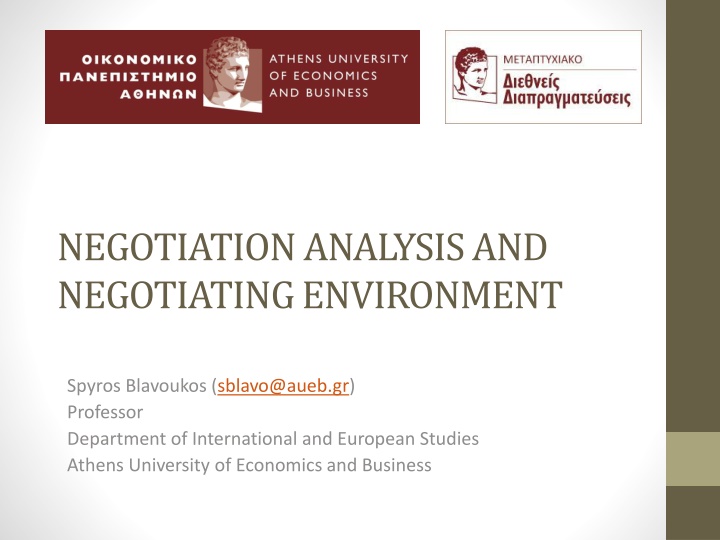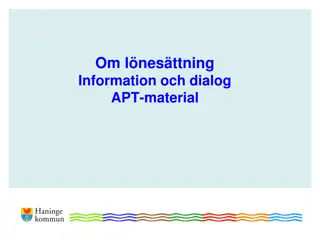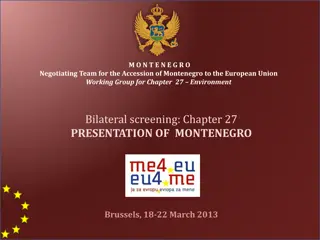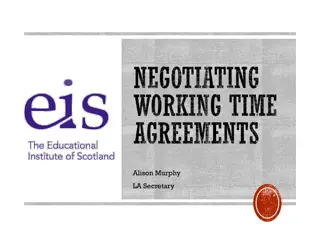NEGOTIATION ANALYSIS AND NEGOTIATING ENVIRONMENT
Negotiation is a dynamic process crucial for conflict management and resolution, requiring a balance of toughness and softness to reach favorable agreements. Learn about negotiation paradoxes, cognitive biases, and strategies for successful negotiations. Explore the importance of communication, values, and outcomes in achieving joint decisions through negotiation.
Download Presentation

Please find below an Image/Link to download the presentation.
The content on the website is provided AS IS for your information and personal use only. It may not be sold, licensed, or shared on other websites without obtaining consent from the author.If you encounter any issues during the download, it is possible that the publisher has removed the file from their server.
You are allowed to download the files provided on this website for personal or commercial use, subject to the condition that they are used lawfully. All files are the property of their respective owners.
The content on the website is provided AS IS for your information and personal use only. It may not be sold, licensed, or shared on other websites without obtaining consent from the author.
E N D
Presentation Transcript
NEGOTIATION ANALYSIS AND NEGOTIATING ENVIRONMENT Spyros Blavoukos (sblavo@aueb.gr) Professor Department of International and European Studies Athens University of Economics and Business
STUDYING NEGOTIATIONS KEY CONCEPTS
What is Negotiation? First written text describing a negotiation: Abraham in his negotiation with the Lord over the fate of Sodom [Genesis 18:23 33] negotiation as one of the basic processes of decision-making: dynamic, not static parties, values, outcomes (success), and movement
Negotiation as a means to accomplish conflict management and conflict resolution. Negotiation is the process of combining divergent/conflicting positions through communication into a joint decision. Negotiation means giving something to get something: Many negotiators forget that if they want something, right is not enough: they have to either take it or buy it; if they can t take it, they must buy it; and if they have to buy it, they have to pay for it, by giving something in exchange
Fundamental Paradox If I am Tough, I increase the chances of a favorable agreement but decrease the chances of any agreement at all, whereas if I am Soft, I increase the chances for an agreement but decrease the chances for a favorable one. [Zartman, 2008]
Negotiations and Right Many negotiators forget that if they want something, right is not enough: they have to either take it or buy it; if they can t take it, they must buy it; and if they have to buy it, they have to pay for it, by giving something in exchange 6
Negotiation Myopia Two frequent cognitive mistakes: fixed-pie bias can blind participants to the possible gains in a negotiation (up to 60%) self-serving bias often produces impasse even when both parties can gain from agreement
Overcoming Negotiation Myopia Rules of collective political engagement careful incorporation of technical expertise, repeated interactions, penalty defaults, and relative autonomy/flexibility/confidentiality in the conduct of negotiations
Studying Negotiations: Asking the right questions Who is negotiating (parties + values) What comes out of the negotiations (outcome) When refers to the end of the process (element of time and timing) But more importantly: How are divergent viewpoints combined to produce a common agreement? (process - movement)
And Answering Them [First Attempt] HOW? divergent positions are combined by limiting alternatives. Negotiation is a process of defining and reducing alternative positions until a unique combination is reached that is acceptable to all parties; it is a collective decision-making process
Limiting Alternatives FOUR WAYS: make one alternative appear more attractive than others (promising side effects, predicting benefits inherent in the favored alternative). make one alternative appear less attractive than others (threaten sanctions, warn of deprivations) make one alternative appear to be already chosen (use of commitments and obligations) make some alternatives appear to be already eliminated (fait accompli, simple incapacity)
And Answering them[Second Attempt] HOW? divergent positions are combined by ensuring convergence of positions simple coincidence of initial positions concession (one party gives in to the other) counter-concessions or compensation (the receiver of a concession makes also one in return, but on another matter) compromise or joint concession understanding (explicit convergence is bypassed and the debate goes on to implement an ambiguity) (Ikle 1964, pp. 14 22).
How Can We Tell Success 1. Signature of an agreement: a nominal sign (parties expect to be better off with the agreement than without it and can do not better by either continuing negotiations or choosing an alternative outcome). 2. Empirical verification: are parties indeed better off? 1. by comparing their condition before and after the agreement 2. by comparing their position after the agreement with their presumed position at the same time in the absence of an agreement (counterfactual). 3. Results evaluated against the parties opening positions (problem: initial inflation of demands)
Key Theoretical Readings Schelling (1960): The Strategy of Conflict , elements of power Ikle (1964): How Nations Negotiate , different types of processes Walton and McKersie (1965) A Behavioral Theory of Labor Negotiations , typology of process-driven outcomes
STUDYING NEGOTIATIONS - DIFFERENT APPROACHES
Structural analysis based on a distribution of elements: power-based approach: parties relative positions (resource possessions) or their relative ability to make their options prevail (or to counter the other s efforts to make its options prevail) 16
Strategic analysis Also based on an array of elements but its focus is on ends (goals), not means (power). Key assumption (as portrayed in game theoretic matrices): outcomes determined by the relative array of their values to the parties, under conditions of rational choice. Standard strategic models [Prisoners Dilemma Game (PDG) and Chicken Dilemma Game (CDG)]. Game theory records values as given and shows the strategies that will be chosen and the consequences of doing so.
Process analysis Explains outcomes through a series of concessions determined by some element inherent in each party s position. Concessions based on a comparative calculation of one s own vs. opponent s costs, or of one s own costs vs. some acceptability level On this basis, we seek to identify which party will concede how much until the final point of convergence is reached 18
Behavioral analysis Different explanation: focus on the negotiators The terms of analysis used are the personalities of the negotiators, either directly or in interaction. Personal predispositions that exist at a number of different levels, from biologically-ingrained needs to more influenceable attitudes. 19























